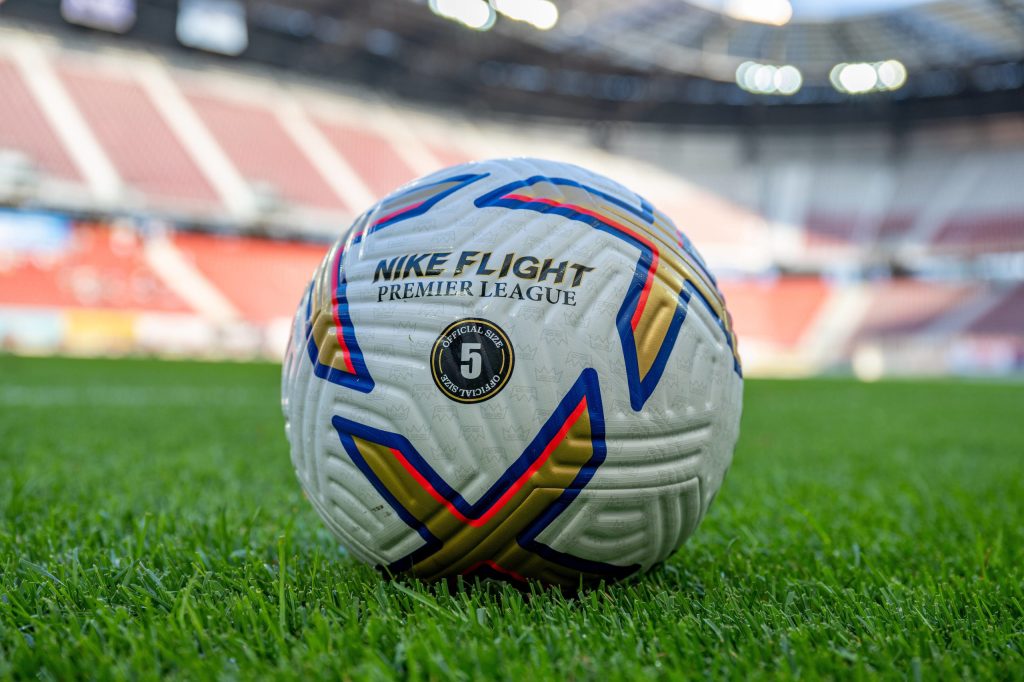Ten weeks later than planned, the Swedish Allsvenskan got underway this weekend. Djurgårdens, who won their first league title since 2005 on the last day of the 2019 season, travelled to Sirius. On their previous visit to the Studenternas IP Djurgårdens ran out 2-0 winners. That game unfolded in similar circumstances to this one. An early goal for Djurgårdens was followed by plenty of possession by Sirius but without too many threatening moments. In this tactical analysis, we will look at the attacking tactics of Sirius, their high press and do an analysis of how Djurgårdens low block and tactical adjustments led next seasons Champions League entrants to a 2-0 win.
Lineups
Sirius set up in a 3-5-2 formation with a midfield consisting of two central holding midfielders and two attacking midfielders. As we will cover in more detail later, the two attacking midfielders had a central starting position but moved into wide areas to support the ball. The wingers, who covered a lot of ground, supported the attack from very advanced positions and dropped into the backline at times when Sirius did not have the ball.
Djurgården played their expected 4-2-3-1 formation. Fredrik Ulvestad (#23), who briefly played in the English Premier League with Burnley, lined up alongside Jesper Karlström (#6) in defensive midfield. The two defensive midfielders stayed almost entirely behind the ball allowing the four in front of them to attack freely when in possession. Emir Kujović (#20), who formerly played in the Bundesliga with Fortuna Düsseldorf, played as the lone striker.
Sirius Attack – Swing and Switch
 Other than for Sirius goal kicks, when they pressed high, Djurgården dropped off into a mid-block and allowed Sirius to have the ball. Sirius attempted to break down this block by moving their wingers high and wide and spreading out their back three. This allowed them to move the ball from side to side efficiently to spreading out Djurgårdens midfield and create passing lanes into more advanced positions. When they were able to create enough room for a forward pass, they usually played into the feet of one of the wingers’ or attacking midfielders.
Other than for Sirius goal kicks, when they pressed high, Djurgården dropped off into a mid-block and allowed Sirius to have the ball. Sirius attempted to break down this block by moving their wingers high and wide and spreading out their back three. This allowed them to move the ball from side to side efficiently to spreading out Djurgårdens midfield and create passing lanes into more advanced positions. When they were able to create enough room for a forward pass, they usually played into the feet of one of the wingers’ or attacking midfielders.
 Sirius midfield and forwards were very dynamic with their movements off the ball and had great positional relationships. In this example, the ball is swung from left to right then played into the right-winger. Because the right-sided attacking midfielder moves towards the ball, the striker runs in behind. These clever counter-movements were replicated all over the pitch. At times, even a defensive midfielder would run beyond an attacking midfielder with that midfielder taking his place. Here, Djurgården’s left midfielder is drawn to Sirius’s right centre back. Because of this, and Sirius supporting players, the Djurgården’s left-back is initially overloaded. Djurgården then overcompensates and shift their midfield and defence over to that side of the pitch.
Sirius midfield and forwards were very dynamic with their movements off the ball and had great positional relationships. In this example, the ball is swung from left to right then played into the right-winger. Because the right-sided attacking midfielder moves towards the ball, the striker runs in behind. These clever counter-movements were replicated all over the pitch. At times, even a defensive midfielder would run beyond an attacking midfielder with that midfielder taking his place. Here, Djurgården’s left midfielder is drawn to Sirius’s right centre back. Because of this, and Sirius supporting players, the Djurgården’s left-back is initially overloaded. Djurgården then overcompensates and shift their midfield and defence over to that side of the pitch.
 Similar movements were replicated on Sirius’s left side. This image shows the moments after the left-winger, Axel Björnström (#16) has received the ball. The left-sided defensive midfielder and attacking midfielder (who is now in possession) made movements towards the ball and created a triangle. The Djurgården right back (circled) was drawn out of position towards the ball. Outnumbered, the ball is played around him which draws Djurgården’s defensive midfielders towards the ball. To cover for the right-back being high up the field, Djurgården’s backline must shift across. The left-back (circled) also has his attention drawn to Sirius’s right-sided attacking midfielder, who has made a central movement, so is further across the field than he would like to be. This leaves space for Sirius’s right-winger to run into.
Similar movements were replicated on Sirius’s left side. This image shows the moments after the left-winger, Axel Björnström (#16) has received the ball. The left-sided defensive midfielder and attacking midfielder (who is now in possession) made movements towards the ball and created a triangle. The Djurgården right back (circled) was drawn out of position towards the ball. Outnumbered, the ball is played around him which draws Djurgården’s defensive midfielders towards the ball. To cover for the right-back being high up the field, Djurgården’s backline must shift across. The left-back (circled) also has his attention drawn to Sirius’s right-sided attacking midfielder, who has made a central movement, so is further across the field than he would like to be. This leaves space for Sirius’s right-winger to run into.
 With Djurgården now drawn to one side, Sirius quickly switch the ball to the opposite winger. The left-back is now exposed with Sirius’s right-winger dribbling at him. The front three plus the left-winger all make supporting runs towards the box. This gives the man on the ball plenty options and Sirius can work a shot at goal.
With Djurgården now drawn to one side, Sirius quickly switch the ball to the opposite winger. The left-back is now exposed with Sirius’s right-winger dribbling at him. The front three plus the left-winger all make supporting runs towards the box. This gives the man on the ball plenty options and Sirius can work a shot at goal.
 Here the same movements are recreated higher up the field. Instead of a long diagonal, the ball was played into the right-sided attacking midfielder. This pass drew the left-back in even further before the Sirius right-winger was put through on goal. Unfortunately for Sirius, a poor first touch by the winger meant the defence could recover the ball. Sirius created many chances in the opening periods of the game this way and were somewhat unfortunate not to be rewarded. A combination of Djurgården adapting well and scoring early, therefore not having to chase the game, meant these movements became less effective as the game wore on.
Here the same movements are recreated higher up the field. Instead of a long diagonal, the ball was played into the right-sided attacking midfielder. This pass drew the left-back in even further before the Sirius right-winger was put through on goal. Unfortunately for Sirius, a poor first touch by the winger meant the defence could recover the ball. Sirius created many chances in the opening periods of the game this way and were somewhat unfortunate not to be rewarded. A combination of Djurgården adapting well and scoring early, therefore not having to chase the game, meant these movements became less effective as the game wore on.
Djurgårdens Mid-block Adaptions
Djurgården spent most of the game without the ball and in a compact mid-block. In the opening phases of the game, Sirius caused them problems with their diagonal switch, but Djurgården adapted and minimalised this threat for perhaps the last hour of the game.
 This example is from the early period of the game when Sirius were drawing Djurgårdens to one side and switching the ball to good effect. As a team, Djurgårdens had not yet adapted. Eight of the ten outfield players are in one half of the pitch and the left midfielder is still pushed up high. The left-back, however, has learned of the danger. As soon as Sirius have played the ball into a player with enough room to switch it, the left-back has dropped off. When the ball eventually reaches the Sirius right-winger, his first touch is under immediate pressure and he is forced to play backwards.
This example is from the early period of the game when Sirius were drawing Djurgårdens to one side and switching the ball to good effect. As a team, Djurgårdens had not yet adapted. Eight of the ten outfield players are in one half of the pitch and the left midfielder is still pushed up high. The left-back, however, has learned of the danger. As soon as Sirius have played the ball into a player with enough room to switch it, the left-back has dropped off. When the ball eventually reaches the Sirius right-winger, his first touch is under immediate pressure and he is forced to play backwards.
 This next image shows how Djurgårdens adapted as a team. When compared to the first image in this section, we can see how much deeper the Djurgården’s wide midfielders and forward are dropping. This is creating almost a 4-4-2. The main benefits of this being to the full-backs who now do not get dragged out of position. This move began on Djurgården’s left and Sirius are attempting to switch it to Djurgården’s right side. Djurgården’s right midfielder is now deep enough where he will not be taken out the game with a switch to Sirius’s left-winger. We can see him looking over his shoulder and being aware of the danger that is there. This shape forces Sirius to play backwards to their back three. Djurgården are happy for them to do this and remain in their shape.
This next image shows how Djurgårdens adapted as a team. When compared to the first image in this section, we can see how much deeper the Djurgården’s wide midfielders and forward are dropping. This is creating almost a 4-4-2. The main benefits of this being to the full-backs who now do not get dragged out of position. This move began on Djurgården’s left and Sirius are attempting to switch it to Djurgården’s right side. Djurgården’s right midfielder is now deep enough where he will not be taken out the game with a switch to Sirius’s left-winger. We can see him looking over his shoulder and being aware of the danger that is there. This shape forces Sirius to play backwards to their back three. Djurgården are happy for them to do this and remain in their shape.

Djurgården adapted very well to Sirius’s game plan and did not allow any chances to hurt them in this manner for the rest of the game. Whilst Sirius had even more possession in the second half (60%) than first (55%) they were not able to create nearly as many opportunities. Djurgården cutting off all dangerous passes meant Sirius had to spend longer on the ball create chances. With a 1-0 lead going into final last five minutes, Djurgården were happy to let Sirius have the ball. This data image above shows that whilst Sirius completed a lot of passes, only just over a quarter of them were in Djurgården’s final third. This was a great example by Djurgården of how to control a game without the ball.
Sirius Press
Sirius will be pleased with much of their play but particularly with their high press preventing Djurgården building attacks from the back. Djurgården set up to play out from their goalkeeper, Tommi Vaiho, but rarely did they get out their defensive third.
 As shown above, the front three players hold their ground at the edge of the 18-yard box. They are positioned with little space between them for Djurgården to play a safe pass through. Sirius’s defensive midfielders are more advanced than Djurgården’s attacking midfielders and ready to press. This set up forces Djurgården to play around rather than through the press. As soon as the ball is played out to a full-back, Sirius’s near side winger presses the ball with the opposite one dropping back.
As shown above, the front three players hold their ground at the edge of the 18-yard box. They are positioned with little space between them for Djurgården to play a safe pass through. Sirius’s defensive midfielders are more advanced than Djurgården’s attacking midfielders and ready to press. This set up forces Djurgården to play around rather than through the press. As soon as the ball is played out to a full-back, Sirius’s near side winger presses the ball with the opposite one dropping back.
Here, the ball is played to the right back. Sirius’s left-winger presses the right-back before he receives the ball forcing him to play a backwards pass. This backwards pass is the trigger for the press. It is done with great effect and seldom did Djurgården play through it. Djurgården mostly kicked the ball out of play or long towards a forward. Due to Djurgården being fairly risk-averse in their own third, Sirius did not get many possession regains in that area. They did, however, prevent Djurgården from building any form of attack. Sirius’s high press was becoming such a threat that Vaiho kicked all his possessions long during the last 30 minutes.
Conclusion
An enjoyable game to watch with two technically and tactically sound teams. Sirius look very comfortable all over the pitch picking up the ball in tight areas. When they come up against an opposition who presses higher or needs a goal, Sirius’s fluid, dynamic style will pay dividends. Even against a team with a similar game plan to Djurgarden’s, but without the same quality in execution as them, Sirius will be confident. Despite how good Sirius were on the ball at times and with their clever counter-movements, Djuargarden’s defensive organisation looked solid. They are far from just a team that just “parks the bus” but on this occasion, they showed exactly how to control the game without the ball. Their 16 clean sheets out of 30 last season speak for themselves.








